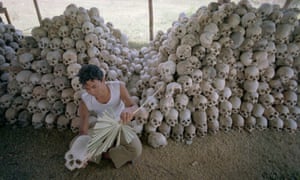In this week's reading "War, Genocide, and Justice" by Schlund-Vials, the author discusses the horrific stories of the Khmer Rouge and how many innocent Cambodian people were killed. Khmer Rouge targeted and killed anyone who were educated or spoke out. Vials states in her book that "the Khmer Rouge found little resistance from Cambodians wary of illegal bombings, chaotic civil war, and ceaseless military violence (1)." Vials then goes on and describes how the Khmer Rounge regime "systematically evaluated Cambodia's cities and forcibly relocated residents to countryside labor camps (1)." Within just three years, Khmer Rouge resulted in the death of many Cambodians. It was shocking to read about the killings of school teachers. To remember the genocide and to make sure that history is not forgotten, a museum was built to educate the Cambodians and Cambodian Americans about the horrific event. This ties back into the importance of narratives. In order to understand what really happened during the Khmer Rounge and to preserve history, it is important to fully understand the history by visiting museums and hearing narratives. The Khmer Rounge reminded me of the Holocaust because they were both genocides that were run upon by new leaders. Both the Nazi's and Khmer Rouge had camps that they sent the prisoners of war to where they were forced to work many hours and treated inhumanely. One question I have is, why did the U.S not intervene during the Khmer Rouge genocide?

https://www.theguardian.com/world/2018/nov/19/no-more-khmer-rouge-prosecutions-says-cambodia


No comments:
Post a Comment